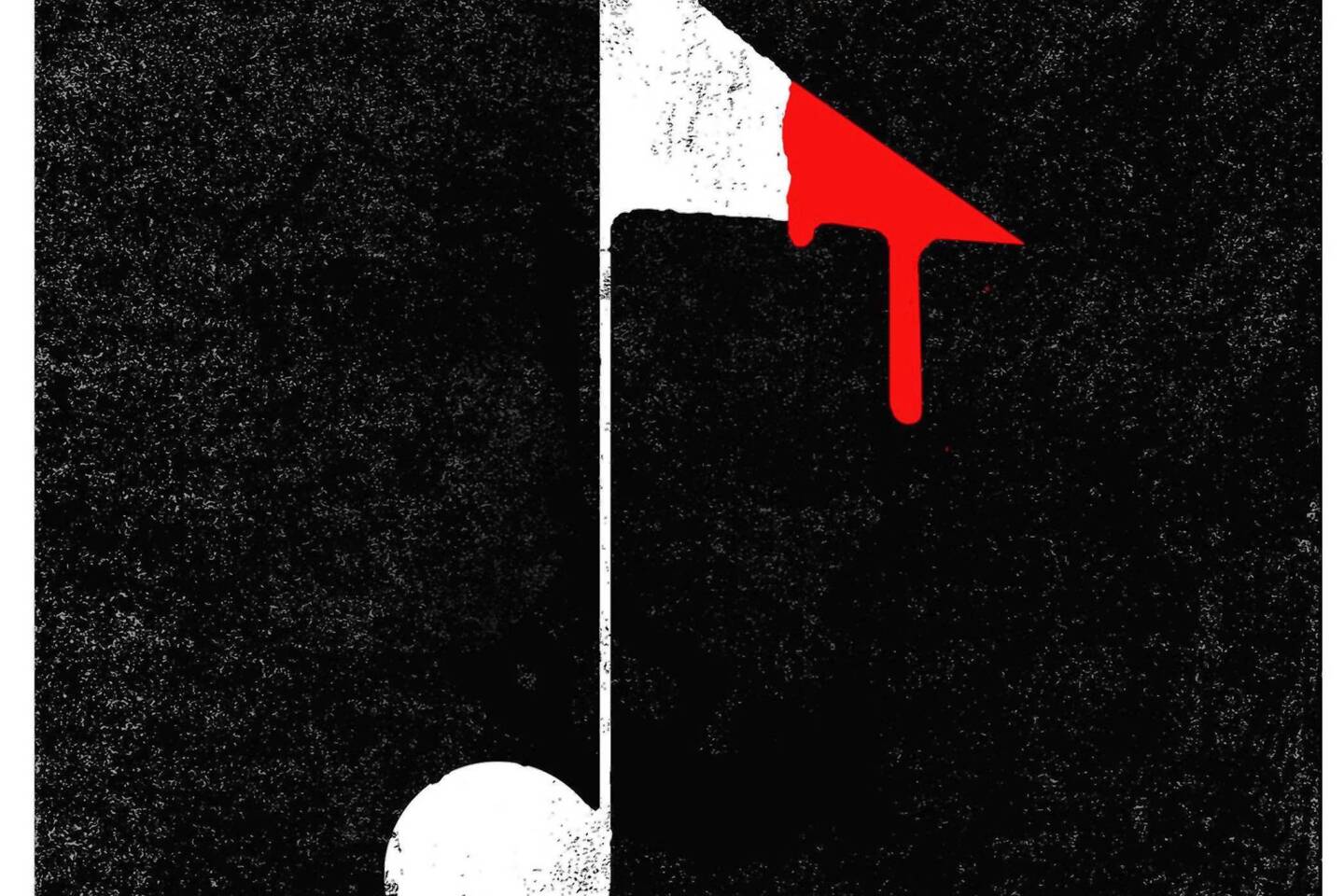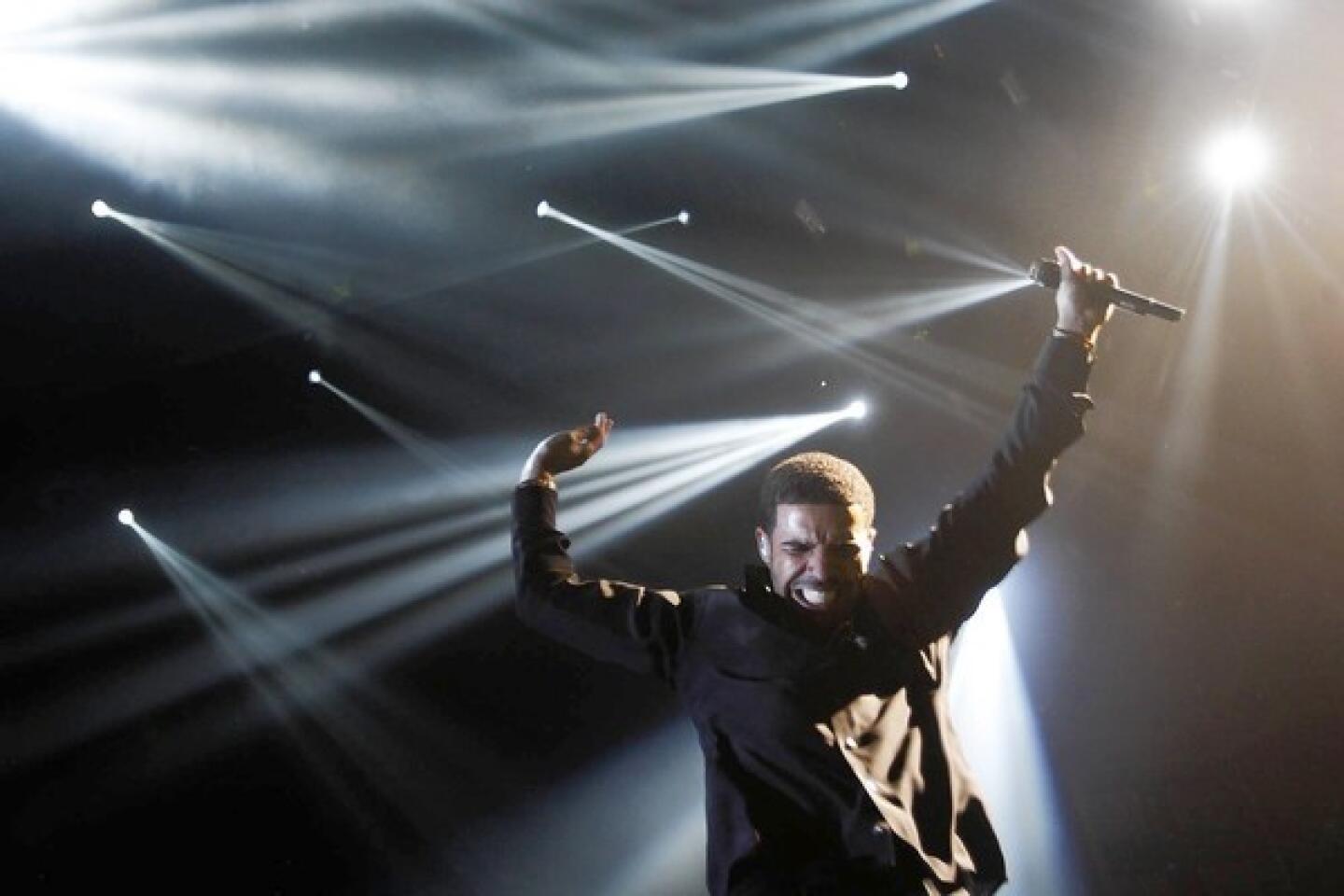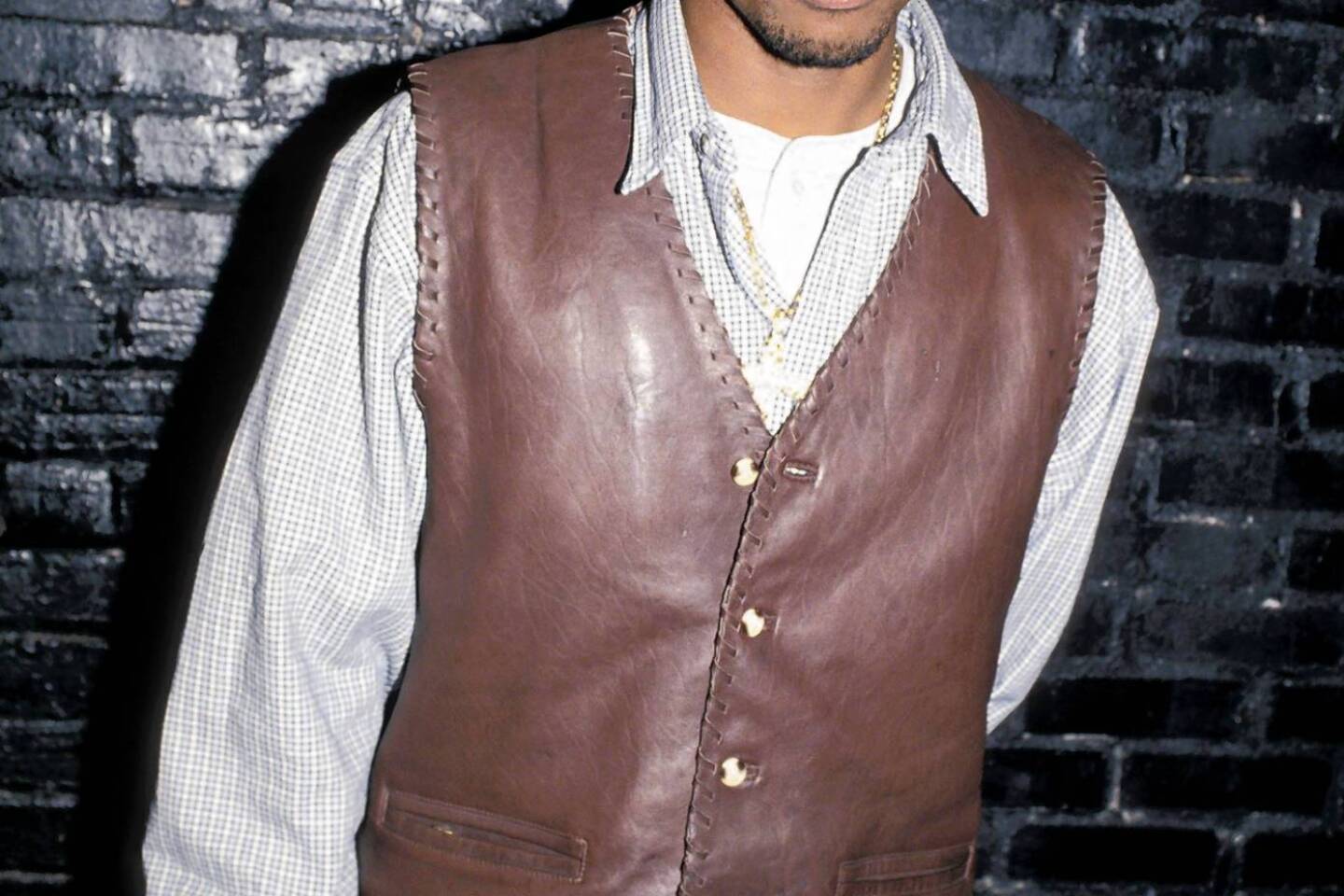In hip-hop, violence is taking on a diminishing role
- Share via
Among the most important rap albums released over the last year or so, one contains a song about Nas’ complicated relationship with his teenage daughter. Another has a track in which Killer Mike outlines President Reagan’s contribution to the prison-industrial complex. A third disc finds Drake pondering the impossibility of real-life romantic connection in the age of the nip-slip Twitpic.
The title of Drake’s record, which last week won the Grammy Award for rap album? “Take Care.”
To say that hip-hop has evolved over the last 25 years — since the days when rappers such as Ice-T and Ice Cube were terrorizing the likes of Tipper Gore, who famously lobbied for the adoption of the Parental Advisory sticker — seems an almost-laughable understatement, equal to saying that the Internet has had some effect on the way we consume music. Once perceived as a site of uncut nihilism, hip-hop has made room, in a way that outsiders can’t ignore, for practicality and ambivalence and staunchly middle-aged concerns. Achievement too.
THE CULTURE OF VIOLENCE: Art | Film | Television | Hollywood
And it’s become more peaceful, at least on the surface. At a moment in which the depiction of violence in other forms of media appears increasingly graphic, much of the conflict in hip-hop has moved inward, its players fighting battles of ideas and emotions.
How did this happen?
In a sense the music forced itself to change. The back-to-back slayings of 2Pac and the Notorious B.I.G. (in 1996 and 1997, respectively) served terrible notice that gangsta rap — with its ever-intensifying cycle of threats and reprisals — had gotten all too real, a verbal arms race turned dangerously corporeal. No longer were rappers working in the shadowy in-between-world of showbiz persona, portraying characters on record but retreating to safety outside the studio.
Avatars of a gang-related West Coast-East Coast feud, Tupac Shakur and Christopher “Biggie Smalls” Wallace died the deaths of their alter egos — a dramatic indication that in music, as distinct from movies and television, the separation sometimes disappears between art and artist. Try to imagine Oliver Stone, who last year took up the horrific Mexican drug war in his film “Savages,” in anything approaching the same kind of jeopardy.
But the diminishing role of violence in hip-hop also reflects the genre’s shifting circumstance. One of rap’s central victories is that it can move freely now through subject matter; it doesn’t have to adhere to an enforced set of topics — at least not any more than country or R&B or rock ‘n’ roll has to. And that’s opened the music to artists without the kind of street experience that once seemed required of them.
THE CULTURE OF VIOLENCE: Video Games | World Cinema
Drake, for instance, spent his adolescent years as the star of a Canadian teen TV show, while Kanye West (who’s done as much as anyone in recent years to destabilize old hip-hop verities) grew up in suburban Chicago the son of a prominent English professor. Do these performers know violence firsthand? Possibly. But it doesn’t seem to define their outlook, nor is it the thrill we seek vicariously in their records.
“The traditional gangsta-rap narratives don’t hold the grandiose power they used to,” said Nelson George, an author and filmmaker whose work includes “Hip Hop America,” as well as the Chris Rock gangsta-rap spoof “CB4.” Those narratives have been weakened in part through overuse, George said. But he added that violent thrills are emigrating to other forms, such as video games. “If you’re 17 years old, you don’t want to listen to a guy shooting somebody,” he said. “You want to be the guy.”
In response, hip-hop’s allure, more often than not, has turned aspirational, as on ASAP Rocky’s 2013 major-label debut, “Long Live ASAP.” Here this young Harlem MC describes a tantalizing lifestyle populated by beautiful women and filled with high-end luxury goods; one track, “Fashion Killa,” basically amounts to a laundry list of fashion labels: “She got a lot of Prada, that Dolce & Gabbana / I can’t forget Escada and that Balenciaga.” Even-tempered and sleekly realized, the music on “Long Live ASAP” feels uninterested in (or perhaps unimpressed by) the rough concerns of the corner.
The same goes for “Finally Famous” by Big Sean, a West protegé with little use for struggle. “I’m just doing better than what everyone projected,” he boasts in “My Last,” “I knew that I’d be here, so if you ask me how I feel / I’m-a just tell you it’s everything that I expected.”
THE CULTURE OF VIOLENCE: On-screen history | Theater | Research
If ASAP Rocky and Big Sean float above gang culture, as though its crude distractions had become passé, other rappers seem stationed outside it. On last year’s “good kid, m.A.A.d city” — named the best hip-hop album of 2012 by many critics — Kendrick Lamar details plenty of violence in his native Compton, where gangsta rap was more or less invented by N.W.A. in the late ‘80s. But Lamar presents himself as an observer, not a participant, a stance the Roots also took for their 2011 album, “Undun,” which recounts the short life of a small-time hood in painstaking reverse-chronological order.
“I turned 20 and realized that life wasn’t getting anyone anywhere,” Lamar told The Times in October. “You hear stories from the ‘80s about people selling dope and becoming millionaires, but in reality it’d just be guys walking around with $70 in their pockets. I knew I wanted something else.”
There are, of course, exceptions to this disarmament. The teenage Chicago rapper Chief Keef — the most visible member of that city’s so-called drill scene — spent a portion of 2012 under house arrest as a result of gun charges; he later made headlines when he appeared to joke about the murder of a rival MC on Twitter. And Rick Ross, that rotund purveyor of good-life extravagance, has been drawn into gang matters of late: Last month, he was caught up in a drive-by shooting in Florida, the apparent target of a group reportedly unhappy with Ross’ lyrical references to a gang leader.
Yet that development seemed to surprise even Ross, who’s happily (and successfully) made himself into a caricature in the years since a website revealed his background as a former corrections officer.
The violence on Ross’ records plays like Grand Guignol; it vibrates on an entirely different wavelength than N.W.A.’s did. The intrusion of actual gunplay into the rapper’s actual life felt weirdly old-fashioned.
More to Read
The biggest entertainment stories
Get our big stories about Hollywood, film, television, music, arts, culture and more right in your inbox as soon as they publish.
You may occasionally receive promotional content from the Los Angeles Times.















